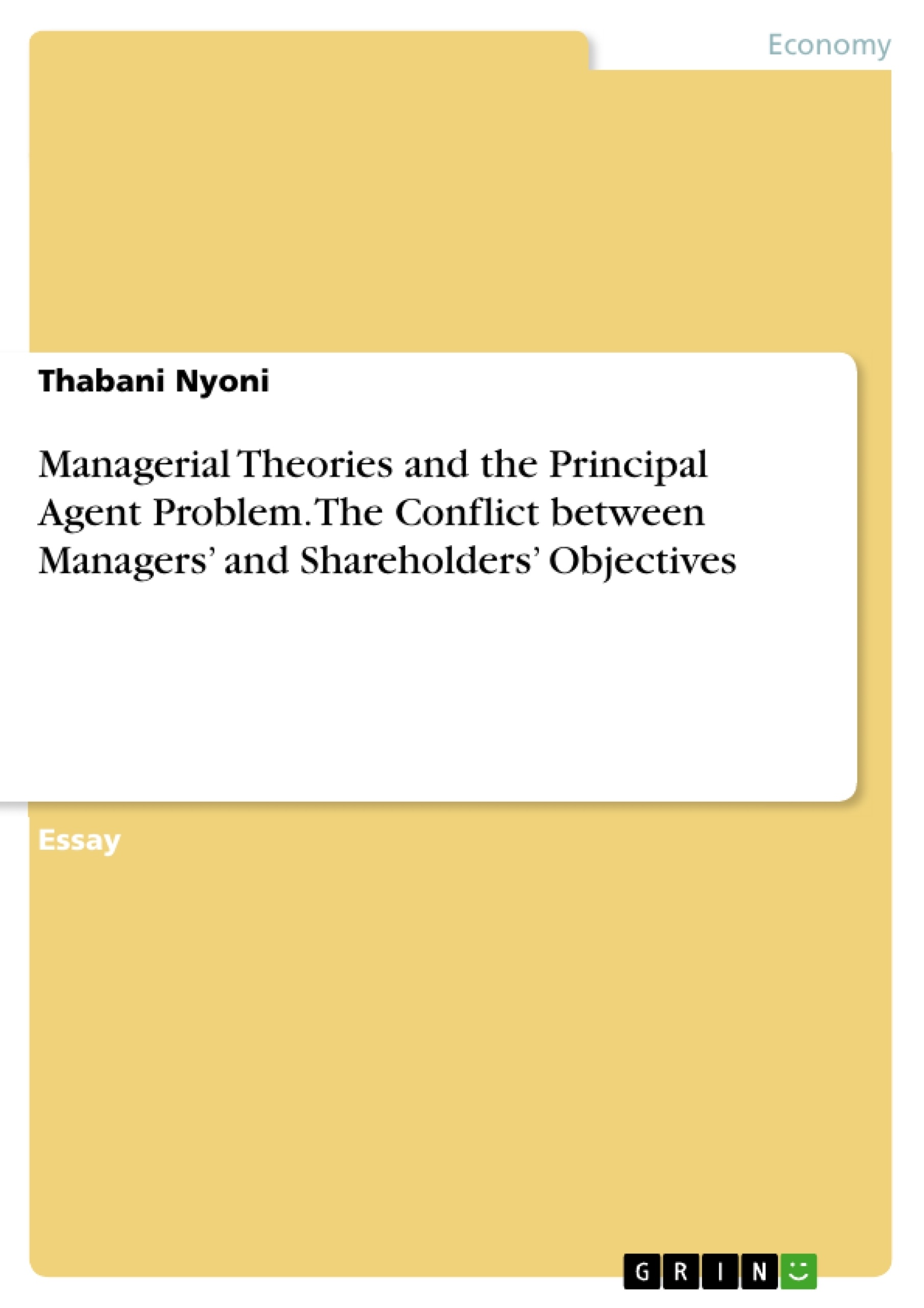While it is important to understand the various objectives of firms, it is equally important also to note that some of these objectives may be inconsistent or incompatible with each other due to the principal-agent problem that normally exists between shareholders (owners of the firm) and managers (those who control the firm). This essay serves to analyse some managerial theories in light of the principal-agent problem and the conflict of interest between the shareholders and managers.
Inhaltsverzeichnis (Table of Contents)
- The conflict between managers' and shareholders' objectives
- The principal-agent problem
- Diverging objectives and asymmetric information
- Profit maximisation in the short run or long run?
- Sales maximisation model
- Managerial utility maximisation model
- Maris growth model
- Behavioural theory of the firm
Zielsetzung und Themenschwerpunkte (Objectives and Key Themes)
This text explores the principal-agent problem in managerial economics, specifically focusing on the conflict between managers' and shareholders' objectives. It delves into the complexities of this conflict arising from diverging interests, information asymmetry, and different motivations for maximizing profits, sales, or managerial utility.
- The principal-agent problem and its implications for managerial decision-making
- Divergent objectives of managers and shareholders
- The role of information asymmetry and bounded rationality
- Various models explaining firm objectives, including the neoclassical model, sales maximisation model, managerial utility maximisation model, Maris growth model, and behavioural theory of the firm
- The impact of these models on the principal-agent problem
Zusammenfassung der Kapitel (Chapter Summaries)
The text begins by introducing the principal-agent problem and explaining how it arises from the conflict between managers' and shareholders' objectives. It highlights the issue of asymmetric information and the potential for moral hazard. The text then examines different models that explain the objectives of firms, including the neoclassical model, the Baumol sales maximisation model, the Williamson managerial utility maximisation model, the Maris growth model, and the behavioural theory of the firm. Each model sheds light on the different priorities and motivations of managers and shareholders, revealing the complexities of the principal-agent problem in various contexts.
Schlüsselwörter (Keywords)
The main keywords and focus topics of the text include: principal-agent problem, managerial economics, shareholders, managers, objectives, profit maximisation, sales maximisation, managerial utility maximisation, Maris growth model, behavioural theory of the firm, asymmetric information, bounded rationality, moral hazard, conflict of interest, and firm objectives.
- Quote paper
- Bsc (Honours) Economics Thabani Nyoni (Author), 2015, Managerial Theories and the Principal Agent Problem. The Conflict between Managers’ and Shareholders’ Objectives, Munich, GRIN Verlag, https://www.grin.com/document/302048



